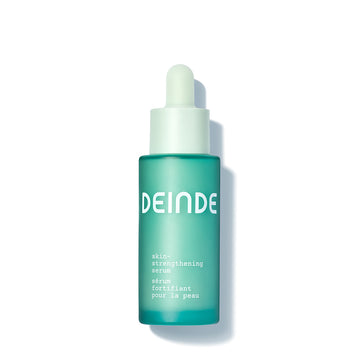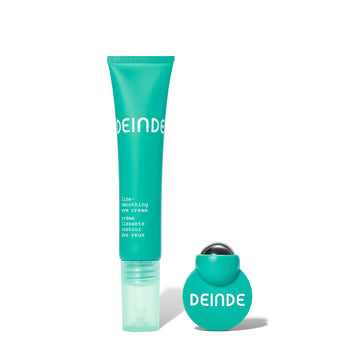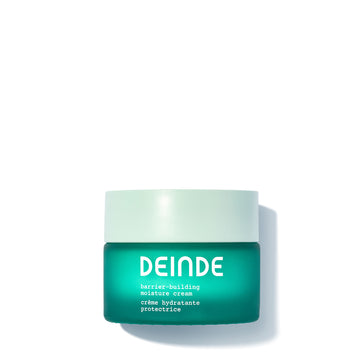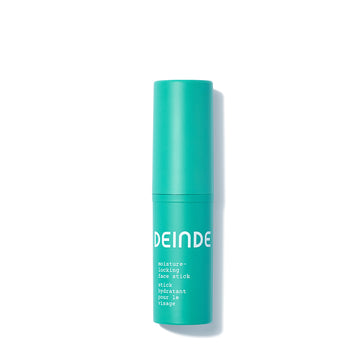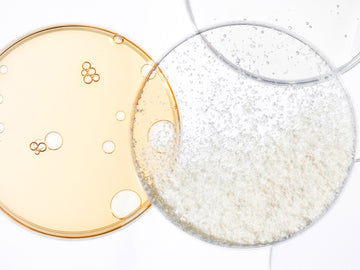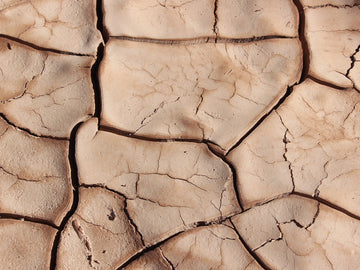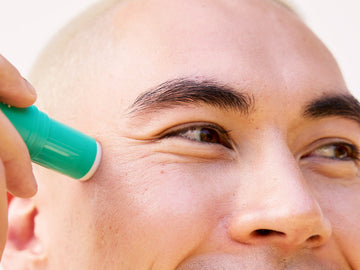
How To Do Under Eye Care, According to Experts
Listen up: This is your sign to pay closer attention to under eye care. Just as oily skin requires a different approach than dry skin, your under eyes have their own specific set of needs. They’re not high-maintenance; they just need a little extra attention to ward off under-eye bags, crow’s feet, and other common concerns.
“The under eye area needs special care because it is thinner and more delicate than other facial skin,” says Marisa Garshick, M.D., a board-certified dermatologist and assistant clinical professor of dermatology at Cornell - New York Presbyterian Medical Center.
Structurally, the skin around your eyes differs slightly from the rest of your face. “It has fewer oil glands, making it prone to dryness and quicker to show signs of aging, such as fine lines, wrinkles, puffiness, and dark circles,” she explains.
Before you start stockpiling eye creams and devices, know that you don’t need to put together an elaborate multi-step routine. Instead, experts say it’s more about keeping consistent habits and searching for tailored ingredients. Katya Khayutin, master esthetician and owner of BelVer Studio, suggests folding under eye care into your existing skincare routine.
“I always highly recommend daily under eye care for my clients,” she says. “It’s advisable to begin focusing on this area in your early 20s.” While there’s no set age to begin treating your under eyes, the delicate skin there can benefit from both preventative and anti-aging approaches.
Ready to get up close and familiar with your under eyes? Below, Dr. Garshick and Khayutin break down everything you need to know about effective under eye care, from pro-approved active ingredients to at-home treatments that actually work.
What Are the Best Skincare Ingredients for Under Eyes?
According to Dr. Garshick, the skin around your eyes is more susceptible to “environmental damage and external irritants” like pollution, free radicals, and UV rays, meaning many of the signs of aging and inflammaging will show here first. To combat this, she suggests a combination of “gentle yet effective treatments” and skincare products tailored to your under eyes.
Many of the ingredients dermatologists recommend for your under eye skincare will overlap with the rest of your routine, like vitamin C, peptides, and hyaluronic acid. That said, not everything you use on your face is also safe for use in this area. Some ingredients, like retinol, need to be applied at a much lower concentration around your eyes to avoid irritation.
We recommend always double-checking product descriptions or asking if you’re unsure. If you see any cautionary notes about using a moisturizer or serum around your eyes, stick to applying it on the rest of your face only.
Vitamin C
Studies have shown that dark circles are largely hereditary, but they can also become more prominent from external factors like loss of volume, hyperpigmentation, or lack of sleep. If you have dark circles, start using brightening ingredients like vitamin C.
One of the most popular skincare ingredients on the market, vitamin C is an antioxidant known to treat a wide range of skin concerns, from hyperpigmentation, to dullness, to fine lines and wrinkles. It’s also an effective ingredient to use on the skin around your eyes.
“For dark circles, vitamin C brightens and reduces hyperpigmentation,” says Dr. Garshick. Khayutin also recommends it to “reduce the appearance of dark circles.” Remember that topicals don’t have the power to completely erase your dark circles, especially if they’re caused by genetics—but they can give you an extra boost of glow with regular use.
Naringenin
Our hero ingredient, derived from polyphenols like those typically found in citrus peels, is just as effective around your eyes as it is for your overall skincare routine. This proprietary biotech-derived molecule has anti-inflammatory, antioxidant properties that keep inflammaging in check so your skin barrier can function at peak levels—especially important when dealing with thin under eye skin.
It’s also been clinically proven to reduce the look of fine lines and wrinkles, improve your skin’s bounce, boost moisture levels, and reduce visible redness.
DEINDE's own line-smoothing eye cream features patented biotech-derived Naringenin, plus a host of other skin-loving ingredients (like ceramides, peptides, and hyaluronic acid) to support the delicate under eye area.
Caffeine
Caffeine does more than wake you up in your morning latte; it’s also a derm-recommend topical ingredient for targeting both dark circles and puffiness. “Caffeine constricts blood vessels to diminish discoloration,” explains Dr. Garshick. This can help dark circles look less prominent. It also helps act on puffy under eyes.
“For puffiness, it reduces swelling with its anti-inflammatory properties,” she says. Khayutin also frequently recommends caffeine-based eye creams to her clients to help “reduce fluid retention, effectively diminishing puffiness.”
Retinol
A powerful form of vitamin A, retinol speeds up skin cell turnover and boosts collagen production, which is why dermatologists recommend it for targeting both breakouts and wrinkles. Dr. Garshick says it’s great for counteracting puffiness in your under eye area because it can “boost collagen, firming the skin and improving elasticity.”
It’s also a smart pick for treating fine lines and wrinkles, she says, since its collagen-boosting properties can help them look smoother.
One caveat: Retinol is known to make your skin especially sensitive to UV rays and sun damage, so make sure to apply it only at night and protect your skin with sunscreen and sunglasses during the day. “Retinol should be used cautiously due to its potential to cause irritation,” adds Khayutin.
If you’re new to the ingredient, use a low concentration and stick with retinol products specifically formulated for use around the eyes—don’t just assume that your retinol serum or moisturizer can pull double duty as an eye cream.
Peptides
Peptides are a multifunctional protein often used in skincare to help moisturize, smooth, and firm. They’re also a popular ingredient used in eye creams and serums—and you’ll find them in our line-smoothing eye cream, as well as our skin-strengthening serum, which is formulated with biomimetic tripeptide, a signal peptide that supports your skin’s natural collagen production.
Dr. Garshick says their collagen-boosting properties can help firm your under eyes and make them bouncier, helping to depuff the area. Khayutin recommends them for their hydrating, plumping properties, which she says can help make fine lines look less visible.
Niacinamide
Another hero ingredient found in our skin-strengthening serum, niacinamide is a multitasking form of vitamin B known for its ability to help clear pores and refine uneven skin texture. It’s also known to help treat hyperpigmentation and give skin an overall brightening boost.
Khayutin recommends this ingredient as an under eye brightener that can help minimize the look of dark circles. Similar to vitamin C, there are limits to how much it can do. If your dark circles are very prominent, you’ll probably want to pair your niacinamide topical with a layer of your favorite concealer.
Hyaluronic Acid
Hyaluronic acid is a naturally occurring water-binding molecule that locks in moisture, helping replenish hydration levels for plumper, more radiant skin. You’ll find it in our line-smoothing eye cream, as well as in our moisture-locking face stick as one of the ingredients that creates its lightweight-yet-hydrating feel.
“It hydrates and plumps the skin, minimizing the appearance of lines,” says Dr. Garshick, who recommends incorporating this ingredient in your under eye care routine.
Khayutin is also a fan, citing its ability to make fine lines look smoother. Note that the effect is a short-term result of hydration: When your skin is moisturized, fine lines become a little less visible, but the effect isn’t permanent.
How To Perform At-Home Under Eye Care
Just like the rest of your skincare routine, under eye care doesn’t have to be complicated or expensive. “Several effective at-home treatments can address common under eye concerns,” says Khayutin, who often recommends a mix-and-match approach of the treatments below to her clients. The most important thing, she stresses, is to stay consistent.
“Incorporating these treatments into your daily regimen can yield significant benefits in addressing under eye concerns,” she says.
Eye Cream
Do you need eye cream? Experts say it doesn’t hurt to add one to your existing routine. While some moisturizers and serums can pull double duty as eye cream, others may contain high levels of ingredients that can irritate the more delicate skin around your eyes. When in doubt, use a separate eye cream that makes sense for your specific skin goals.
You don’t need different formulas for day and night either, unless your eye cream contains retinol, which makes your skin more sensitive to UV rays during the day. “Early use of suitable hydrating and anti-aging eye creams can preserve your skin’s youthful look,” says Khayutin.
Look for formulas suited to your skin type and concerns—whether you want an eye cream that targets dark circles, fine lines, or both. Our cheat sheet of expert-approved ingredients above will help you find the right one for you.
Eye Masks
For a more intense treatment, keep eye masks on deck when your under eyes look especially tired. “Hydrogel eye patches infused with ingredients like caffeine, hyaluronic acid, and peptides can provide instant cooling and depuffing effects,” says Khayutin.
You can also find reusable hydrogel patches that don’t contain any additional ingredients, but are meant as a protective layer to trap your favorite serums and eye creams underneath. Just make sure they’re safe to use around your eyes before you DIY your eye-patch sandwich.
Microcurrent Devices
Microcurrent refers to a type of low-level electrical current used to help tighten your skin. Khayutin says it’s also great for under eye use—just make sure you’re choosing one that’s either designed for eye use or explicitly states it’s safe to use in this area.
“At-home microcurrent devices stimulate facial muscles to tighten and tone your skin, reducing the appearance of fine lines and wrinkles around the eyes,” she says. “Incorporating one into your daily skincare regimen can yield significant benefits in addressing under-eye concerns.”
Facial Massage
There’s plenty of debate around manual massage around your eyes and whether repeatedly manipulating this area can actually do more harm than good. Khayutin says it “can be beneficial for the under-eye area when done correctly.”
She recommends using a very light touch to avoid dragging your skin. “Using your ring finger to apply minimal pressure is recommended to prevent any potential damage,” she says. When done with caution, a gentle massage can help enhance circulation in this area and reduce puffiness.
Icing
Caffeine isn’t the only thing that helps target blood vessels under your eyes; a drop in temperature can also accomplish the same thing. “Applying cold compresses or ice cubes wrapped in a cloth can help reduce puffiness and temporarily tighten the skin,” says Khayutin.
“The cold constricts blood vessels, reducing swelling and inflammation. This method can be an effective and quick way to address puffiness.” Be careful not to use anything too cold directly on your skin, which can cause unwanted irritation.
Much like facial massage, chilling your under eyes is most effective when you do it with a light touch, she says. So don’t feel the need to dunk your entire face into an ice bath; a cold compress will do.
While Khayutin says the recommendations above can go a long way in caring for your under eyes, there’s no need to incorporate all of them, all at once. Instead, choose the ones you’re most likely to stick to, whether that’s a daily eye cream or cold compresses on an as-needed basis.
The most important thing is to stay consistent and gentle. Stick to that motto, and your under eyes will thank you.
Meet the Experts
-
Marisa Garshick, M.D., F.A.A.D. is a leading board-certified dermatologist serving patients throughout Manhattan, New York at MDCS Dermatology: Medical Dermatology & Cosmetic Surgery, as well as an assistant clinical professor of dermatology at Cornell - New York Presbyterian Medical Center. Dr. Garshick provides a wide variety of cosmetic and medical procedures and services including treatments for acne, eczema, hyperhidrosis, moles, psoriasis, rosacea, signs of aging, skin cancer, skin tags, vitiligo, and wrinkles.
- Katya Khayutin is a master esthetician and owner of BelVer Studio. With 20+ years in esthetics, she combines a background in European training with experience in New York and Dallas. Founder of BelVer Studio, she excels in luxury skincare, blending traditional and modern techniques.
Sources:
Bags under eyes - Symptoms and causes | Mayo Clinic
Retinoids in the treatment of skin aging: an overview of clinical efficacy and safety | PMC
Infraorbital Dark Circles: A Review of the Pathogenesis, Evaluation and Treatment | PMC
